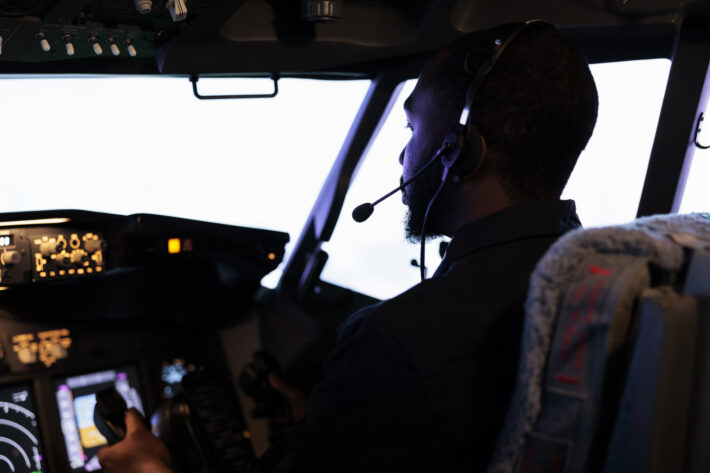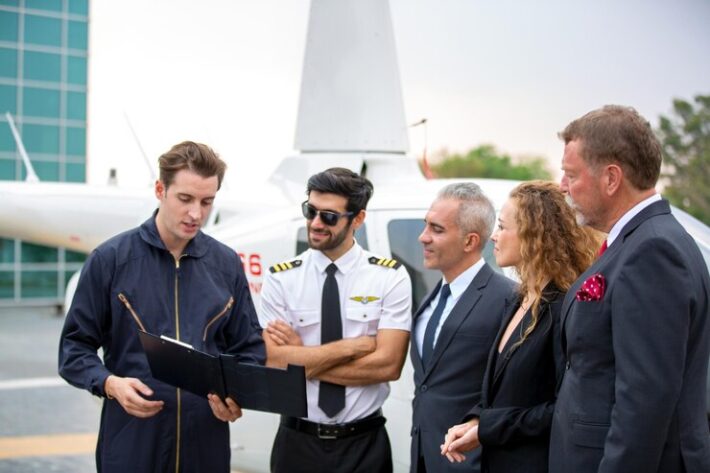Instrument Rating: Why Every Pilot Should Consider It

The instrument rating represents one of the most significant skill enhancements available to private pilots, transforming fair-weather flyers into all-weather aviators. Beyond the obvious benefit of flying in clouds, an instrument rating offers numerous advantages for safety, utility, and pilot proficiency. This comprehensive guide explores why every pilot should consider pursuing this valuable rating.
Understanding the Instrument Rating
The instrument rating allows pilots to fly solely by reference to instruments, without visual reference to the horizon or ground. According to the FAA Instrument Flying Handbook, this rating represents “a logical step in a pilot’s career progression” and significantly enhances both safety and utility.
“The instrument rating doesn’t just allow you to fly in clouds—it fundamentally changes how you think about flying, weather, and risk management. Even on clear days, an instrument-rated pilot brings a higher level of precision and planning to every flight.” – Captain Jennifer Martinez, ATP and Flight Instructor
The Safety Case for an Instrument Rating
Perhaps the most compelling reason to pursue an instrument rating is the significant safety enhancement it provides:
VFR into IMC Prevention
The Deadly Scenario:
- VFR flight into Instrument Meteorological Conditions (IMC) remains one of general aviation’s deadliest scenarios
- According to AOPA Air Safety Institute, VFR into IMC accidents have a 90% fatality rate
- The average survival time for a non-instrument rated pilot in IMC is less than 178 seconds
How the Instrument Rating Helps:
- Provides skills to control aircraft solely by instruments
- Develops weather assessment and forecasting expertise
- Builds confidence to make early diversion decisions
- Creates clear personal minimums and decision points
Enhanced Situational Awareness
Beyond Basic VFR Skills:
- Precise aircraft control within tighter tolerances
- Systematic scanning techniques for instrument interpretation
- Advanced understanding of aircraft performance
- Deeper comprehension of weather phenomena
Practical Applications:
- Maintaining precise headings, altitudes, and airspeeds
- Recognizing and responding to unusual attitudes
- Managing multiple tasks simultaneously
- Maintaining orientation in reduced visibility conditions
Better Decision-Making Framework
Structured Risk Assessment:
- Formal weather minimums and personal limitations
- Detailed alternate planning requirements
- Fuel reserve discipline
- Performance planning precision
Proactive vs. Reactive Approaches:
- Earlier recognition of deteriorating conditions
- More conservative departure decisions
- Better understanding of available options
- Clearer go/no-go and diversion criteria
The Utility Enhancement
Beyond safety, an instrument rating dramatically increases the utility and reliability of your aircraft:
Weather Flexibility
Expanded Flying Opportunities:
- Ability to depart in marginal VFR conditions
- Options to fly above cloud layers
- Capability to arrive through cloud layers
- Reduced weather cancellations and delays
Statistical Advantage:
- Studies show instrument-rated pilots complete approximately 95% of planned flights
- VFR-only pilots complete approximately 75% of planned flights
- Particularly significant for business or time-sensitive travel
- Seasonal advantages in regions with frequent low ceilings
Airspace Access
Expanded Airspace Options:
- Flight into Class A airspace (above 18,000 feet)
- More direct routing through busy terminal areas
- Priority handling from ATC in many situations
- Access to airports during instrument conditions
Practical Benefits:
- More efficient routes in congested airspace
- Higher altitude options for better performance
- Greater flexibility in flight planning
- Access to more airports in varying conditions
Travel Reliability
Schedule Confidence:
- Reduced weather-related cancellations
- Ability to plan trips with greater certainty
- Less need for multi-day weather buffers
- More consistent arrival times
Passenger Considerations:
- Increased confidence from passengers
- More professional flight experience
- Reduced anxiety about weather changes
- Greater willingness to rely on air travel
Professional Development Benefits
The instrument rating represents a significant step in a pilot’s skill development:
Career Advancement
Professional Pathway Requirement:
- Mandatory for commercial pilot career progression
- Required for airline transport pilot certification
- Expected qualification for most flying positions
- Demonstration of commitment to aviation profession
Hiring Advantage:
- Distinguishes candidates for entry-level positions
- Shows dedication to professional standards
- Indicates ability to complete complex training
- Suggests higher safety orientation
Skill Enhancement
Precision Flying Development:
- Maintaining altitude within 100 feet
- Holding headings within 10 degrees
- Executing procedures with exactness
- Managing complex clearances and instructions
Workload Management:
- Handling multiple tasks simultaneously
- Prioritizing actions under pressure
- Maintaining situational awareness during high workload
- Developing effective cockpit organization
Knowledge Expansion
Advanced Understanding:
- Weather theory and forecasting
- Aircraft systems and performance
- Navigation systems and procedures
- Regulations and airspace
Practical Applications:
- Better preflight planning
- More informed go/no-go decisions
- Enhanced troubleshooting capabilities
- Deeper understanding of aircraft limitations
The Training Experience
Instrument training offers a rewarding and challenging educational experience:
Training Requirements
Regulatory Minimums (FAR Part 61):
- 50 hours of cross-country PIC time
- 40 hours of actual or simulated instrument time
- 15 hours of instruction from an authorized instructor
- One cross-country IFR flight of at least 250 NM
- Passing score on knowledge test
- Successful completion of practical test
Practical Considerations:
- National average: 50-80 hours of training
- Typical timeline: 3-8 months part-time
- Knowledge test preparation: 40-60 hours
- Ground instruction: 20-30 hours
Training Options and Approaches
Traditional Part 61 Training:
- Flexible scheduling and curriculum
- Self-paced progression
- Personalized instruction
- Typically longer duration
Accelerated Programs:
- Intensive 10-14 day courses
- Full-time immersion
- Rapid skill development
- Higher short-term costs
Part 141 School Training:
- Structured, approved curriculum
- Potentially reduced minimum hours (35 instead of 40)
- Regular stage checks and progress tracking
- Often associated with colleges or career programs
Simulator-Based Training:
- Cost-effective practice environment
- Weather and emergency scenario simulation
- Procedure repetition without aircraft costs
- Pause capability for instruction moments
Curriculum Components
Ground Training Focus:
- Instrument flight rules and procedures
- Weather theory and forecasting
- Aircraft systems and instruments
- Flight planning and performance
- Aeronautical decision making
Flight Training Progression:
- Basic attitude instrument flying
- Navigation systems and procedures
- Holding patterns and tracking
- Instrument approaches
- Missed approaches and diversions
- Cross-country IFR flying
Cost Considerations
The investment in an instrument rating delivers significant value but requires planning:
National Average Costs
Typical Investment Range:
- $8,000-$15,000 total cost
- Aircraft rental: $5,000-$10,000
- Instructor fees: $2,000-$4,000
- Materials and tests: $500-$1,000
- Simulator time: $500-$2,000
Regional Variations:
- Higher cost areas (Northeast, California): $12,000-$18,000
- Moderate cost areas (Southeast, Midwest): $9,000-$14,000
- Lower cost areas (Rural regions): $7,000-$12,000
Cost Optimization Strategies
Training Efficiency:
- Complete ground school before flight training
- Use home study courses for knowledge test
- Chair-fly procedures between lessons
- Maximize simulator usage for procedure practice
Equipment Choices:
- Consider basic aircraft for training
- Utilize flight training devices when appropriate
- Share costs through instrument training partners
- Consider club aircraft for lower hourly rates
Financial Planning:
- Budget for 25% more than minimum requirements
- Consider financing options if appropriate
- Look for scholarships and grants
- Explore VA benefits if eligible
Return on Investment Calculation
Value Assessment Factors:
- Increased aircraft utility
- Safety enhancement value
- Potential insurance premium reductions
- Career advancement opportunities
- Extended flying season in many regions
Comparative Analysis:
- Cost per additional flyable day gained
- Value of reduced weather cancellations
- Worth of enhanced safety margin
- Long-term value vs. short-term investment
Preparing for Instrument Training
Proper preparation can significantly enhance your training experience:
Prerequisites and Readiness
Regulatory Requirements:
- Private pilot certificate
- Current medical certificate
- English language proficiency
- 50 hours cross-country PIC time (can be earned during training)
Recommended Experience:
- 100+ hours total time for better learning efficiency
- Solid VFR cross-country experience
- Comfort with basic aircraft control
- Night flying experience
Knowledge Foundation:
- Review of private pilot weather knowledge
- Familiarity with navigation systems
- Understanding of aircraft instruments
- Comfort with aviation charts and procedures
Self-Assessment Questions
Skills Evaluation:
- Can you maintain altitude within 100 feet consistently?
- Are you comfortable with VOR and GPS navigation?
- Can you handle radio communications confidently?
- Do you have effective checklist discipline?
Learning Readiness:
- Do you have time for consistent training (2-3 times weekly ideal)?
- Can you commit to regular study between lessons?
- Are you comfortable with technology and avionics?
- Do you have support from family/work for training commitment?
Motivation Clarity:
- Why do you want an instrument rating?
- What specific benefits are most important to you?
- How will you use the rating once obtained?
- What timeline aligns with your goals and resources?
Selecting the Right Instructor
Instructor Qualities to Seek:
- Experience teaching instrument students
- Clear communication style
- Systematic teaching approach
- Patience with procedure repetition
- Availability aligned with your schedule
Questions to Ask Potential Instructors:
- “What is your approach to instrument training?”
- “How do you structure the curriculum?”
- “What are your expectations of students?”
- “What is your instrument checkride pass rate?”
- “How do you incorporate simulators or training devices?”
The Instrument Training Journey
Understanding the typical progression helps set realistic expectations:
Phase 1: Fundamental Skills
Basic Attitude Instrument Flying:
- Controlling aircraft solely by reference to instruments
- Developing systematic scan patterns
- Maintaining straight and level, climbs, descents, and turns
- Unusual attitude recovery
- Partial panel operations
Navigation Fundamentals:
- VOR tracking and intercepting
- GPS navigation basics
- Understanding approach charts
- Radio communication procedures
- ATC clearance interpretation
Phase 2: Procedures and Maneuvers
Holding Patterns:
- Entry procedures (direct, parallel, teardrop)
- Maintaining the holding pattern
- Timing and wind correction
- Holding pattern variations
- ATC communication during holds
Instrument Approaches:
- Precision approach procedures (ILS)
- Non-precision approaches (VOR, RNAV, LOC)
- Approach briefing techniques
- Missed approach procedures
- Circling approaches
Instrument Departures and Arrivals:
- Standard Instrument Departures (SIDs)
- Standard Terminal Arrival Routes (STARs)
- Departure procedure compliance
- Transition to enroute phase
- Descent and approach planning
Phase 3: Practical Application
IFR Cross-Country Flying:
- Flight planning and filing
- Clearance copying and readback
- Enroute procedures and communication
- Weather evaluation and decision making
- Diversion planning and execution
Emergency Procedures:
- Communication failures
- Navigation system failures
- Aircraft system malfunctions
- Weather deterioration scenarios
- Lost communication procedures
Checkride Preparation:
- Practical test standards review
- Mock checkride scenarios
- Oral examination preparation
- Common checkride challenges
- Final skill refinement
Common Challenges and Solutions
Anticipating typical hurdles can help you overcome them more efficiently:
Scan Development Difficulties
Common Issues:
- Fixation on single instruments
- Inconsistent scan patterns
- Slow recognition of trend information
- Overcontrolling based on instrument indications
Effective Solutions:
- Structured scan pattern practice
- Verbalization of instrument indications
- Hood time focused solely on scan development
- Video recording and review of scan patterns
Procedure Complexity
Common Issues:
- Difficulty memorizing approach procedures
- Confusion with holding pattern entries
- Overwhelm with multiple simultaneous tasks
- Chart interpretation challenges
Effective Solutions:
- Chair flying with approach plates
- Simulator practice of procedures
- Breaking complex procedures into smaller components
- Creating personal mnemonics and memory aids
Radio Communication Challenges
Common Issues:
- Difficulty copying clearances
- Uncertainty about readback requirements
- Hesitation in communication
- Confusion with terminology
Effective Solutions:
- Practice with recorded ATC communications
- Clearance shorthand development
- Role-playing scenarios on ground
- Use of ATC communication simulators
Maintaining Currency After Rating
Common Issues:
- Skill degradation without regular practice
- Hesitation to fly in actual conditions
- Procedure memorization fade
- Confidence reduction over time
Effective Solutions:
- Regular practice with safety pilot
- Participation in the FAA WINGS program
- Simulator sessions for procedure review
- Occasional flights with instructor refreshers
Real-World IFR: Beyond the Rating
Earning the rating is just the beginning of your instrument journey:
Building Real-World Experience
Progressive Exposure Approach:
- Begin with high ceiling IFR conditions
- Gradually reduce personal minimums with experience
- Fly with more experienced pilots initially
- Practice approaches in VMC before attempting in IMC
Scenario-Based Practice:
- Simulate realistic IFR scenarios
- Practice decision-making with deteriorating conditions
- Incorporate diversion planning in all flights
- Conduct personal “what-if” briefings
Maintaining Proficiency
Currency vs. Proficiency:
- Legal currency: 6 approaches, holding, tracking in 6 months
- Practical proficiency: Regular challenging practice
- Personal minimums based on recent experience
- Continuous skill assessment and development
Structured Practice Plan:
- Monthly IFR practice sessions
- Quarterly flights with instructor
- Regular simulator sessions
- Systematic coverage of all procedure types
Technology Integration
Modern Avionics Mastery:
- Glass cockpit proficiency development
- GPS and FMS programming expertise
- Weather datalink interpretation
- Autopilot integration and monitoring
Balancing Automation and Hand-Flying:
- Maintaining hand-flying skills in IMC
- Appropriate use of automation
- Recognition of automation limitations
- Practicing reversion to basic instruments
The Psychological Dimension
The mental aspects of instrument flying are as important as the technical skills:
Workload Management
Task Prioritization:
- Aviate, Navigate, Communicate hierarchy
- Breaking complex tasks into manageable components
- Developing standard operating procedures
- Creating personal flow patterns
Cognitive Resource Management:
- Recognition of mental saturation
- Techniques for reducing cognitive load
- Utilization of quiet periods for preparation
- Development of mental triggers for procedures
Stress Management
Sources of IFR Stress:
- Reduced visual references
- High precision requirements
- ATC interaction pressure
- Weather decision responsibilities
Effective Coping Strategies:
- Breathing and relaxation techniques
- Verbalization of procedures and plans
- Preparation and anticipation habits
- Realistic self-assessment and limitations
Confidence Building
Progressive Approach:
- Celebrating incremental achievements
- Recognizing skill development milestones
- Documenting successful challenging flights
- Building a personal experience library
Mentorship Benefits:
- Flying with experienced instrument pilots
- Sharing experiences and techniques
- Receiving feedback and guidance
- Observing expert decision-making
Conclusion: The Transformed Pilot
The instrument rating represents far more than the ability to fly in clouds—it fundamentally transforms how you approach flying in all conditions:
The New Perspective
Enhanced Situational Awareness:
- Three-dimensional understanding of airspace
- Deeper weather interpretation skills
- More comprehensive flight planning
- Greater appreciation for aircraft capabilities and limitations
Elevated Decision-Making:
- More structured risk assessment
- Clearer personal minimums
- Better understanding of available options
- More conservative approach to marginal conditions
Professional Mindset:
- Higher standard of precision
- More thorough preflight preparation
- Greater attention to detail
- More systematic approach to flying
The Practical Impact
Expanded Horizons:
- More destinations within practical reach
- Greater schedule reliability
- Extended flying season in many regions
- Access to more efficient routes and altitudes
Enhanced Safety:
- Reduced vulnerability to weather traps
- Better aircraft control precision
- More options in deteriorating conditions
- Clearer understanding of personal limitations
Personal Growth:
- Significant accomplishment and confidence
- Membership in the community of instrument pilots
- Foundation for advanced ratings and certificates
- Deeper appreciation for aviation complexity
The instrument rating journey challenges pilots to develop new skills, embrace precision, and elevate their decision-making. While demanding, the process creates not just a pilot who can fly in clouds, but an aviator with enhanced capabilities, judgment, and perspective that improve every flight—even those conducted in clear blue skies.
Are you considering an instrument rating or have you recently earned one? Share your experiences and questions in the comments below!
Looking to connect with instrument-rated pilots who can share insights and advice? Join PilotPair today to build relationships with pilots who can help guide your instrument journey.




